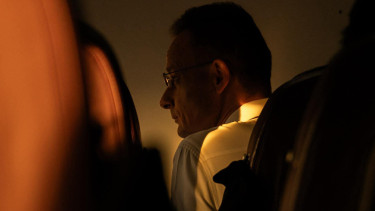Short week brings false relief to respiratory infections in Hungary

Despite what the numbers on the 43rd week show, this respiratory season starts worse than in the previous years. The number of people seeking medical help with acute respiratory infection (ARI) was lower than on the same week of the previous three years, but it was only because this year the national holiday on 23 October fell on a Thursday and Friday was added as a 'bonus' day, while it was not the case before. The number of influenza-like illness (ILI), however, was still higher on the 43rd week than on the same week of the previous three years.
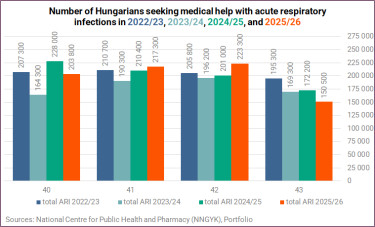
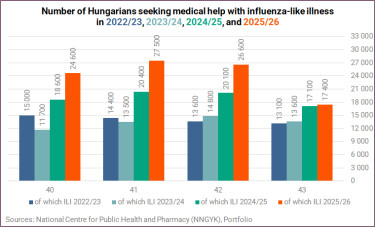
The share of ILI in ARI was 11.6%, also higher than in the previous three years, although it marks a drop from a week ago (11.9%).
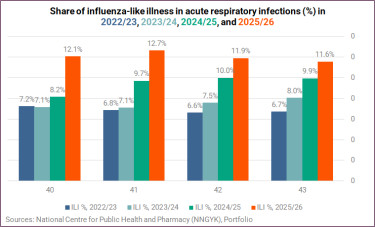
With regard to the number of ARI patients per 100,000 inhabitants, we were (apparently) better off than in either of the previous three respiratory seasons, but again... it was the long weekend.
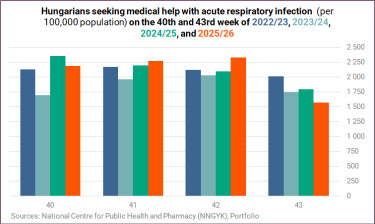
The number of patients with ILI per 100,000 people remained higher than the comparative figures of the previous three seasons.
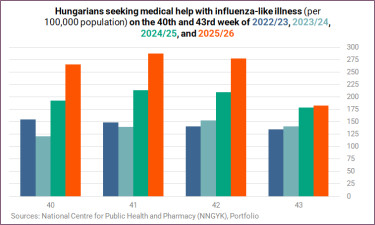
The Covid-19 positivity rate came in at 28.2% when considering all positive tests (47) of the samples submitted by sentinel GPs (166) and at 28.2% when calculating with all positive tests (50) in all of the samples (i.e. those submitted by sentinel hospitals and also traditional diagnostic samples, 177 in total).
The coronavirus positivity rate was lower in 2024/25 (22%), and in 2022/23 (23.1%), but higher in 2023/24 (29.8%).
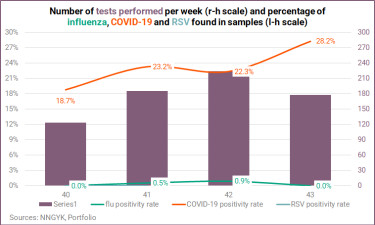
Read our articles about the importance of vaccination below:
Hospitalisations
There were 109 people in hospital with severe acute respiratory infection (SARI), up from 77 a week earlier, of whom 37 tested positive for COVID-19 (33.9%), which compares with 34% in 2024/25 and 73.9% in 2023/24, when hospitals admitted more SARI patients on the 43rd week, 153 in both years.
Nine of the 109 patients needed intensive of subintensive care, a ratio of 8.3, which compares with 10 in the same week of 2024 and 20 in 2023 (with ratios of 6.5% and 13.1%, respectively).
Almost three quarters of people admitted to hospital with a coronavirus infection were over 60 years old (27 in total), and 44% of SARI patients were in this age group (48 in total). A bit less than a quarter of SARI patients were under two years old (26 in total).
The NNGYK also had some key data published since the official end of the previous respiratory season on the 20th week, which show a general increase in the number of hospitalsed SARI patients since the 35th week, except for a surprise drop on the 42nd week. We also find that SARS-CoV-2 is the main reason behind hospitalisations. We anticipated further moderation on the 43rd week due to the shortened week, but were wrong which does not bode well for the future.
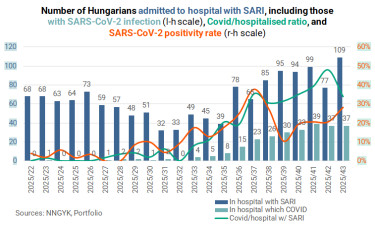
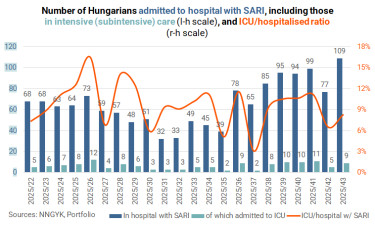
More than 44% (about 78,000) of people seeking medical help with an acute respiratory infection (ARI) in week 43 were children aged up to 14. More than a quarter (cc. 45,000) were aged 15–34.
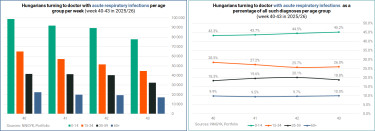
The graphs below show a breakdown of ARI patients by age group for this year and the previous two seasons.
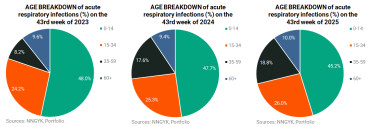
When it comes to ILI, the most affected age group was people aged 15–34, accounting for about 7,000 (34.7%) of all patients with influenza-like illness.
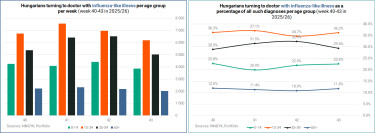
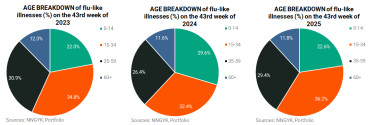
The patterns of the previous years suggest that the ratio of coronavirus infections in hospitalisations should start dropping just about now and get close to 0-10% by the 5th or 6th week of next year. In parallel with this, influenza infections behind hospitalisations should start to pick up before the end of the year or early 2026. And then there's the respiratory syncytial virus (RSV) to consider.
This is how the pathogens 'swapped places' as the main reason behind hospitalisations last year.
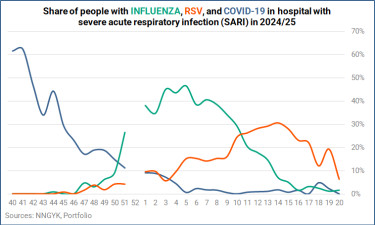
And this is how they changed over the past three respiratory seasons.
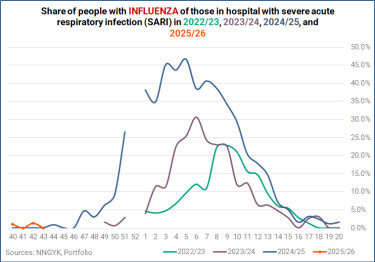
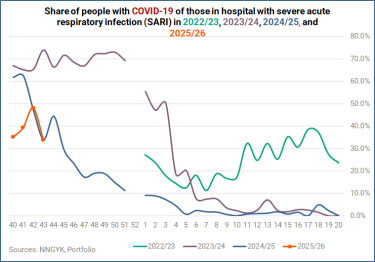
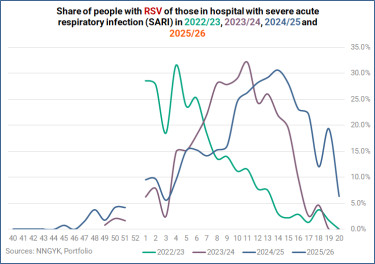
Cover image (for illustration purposes only): Portfolio


